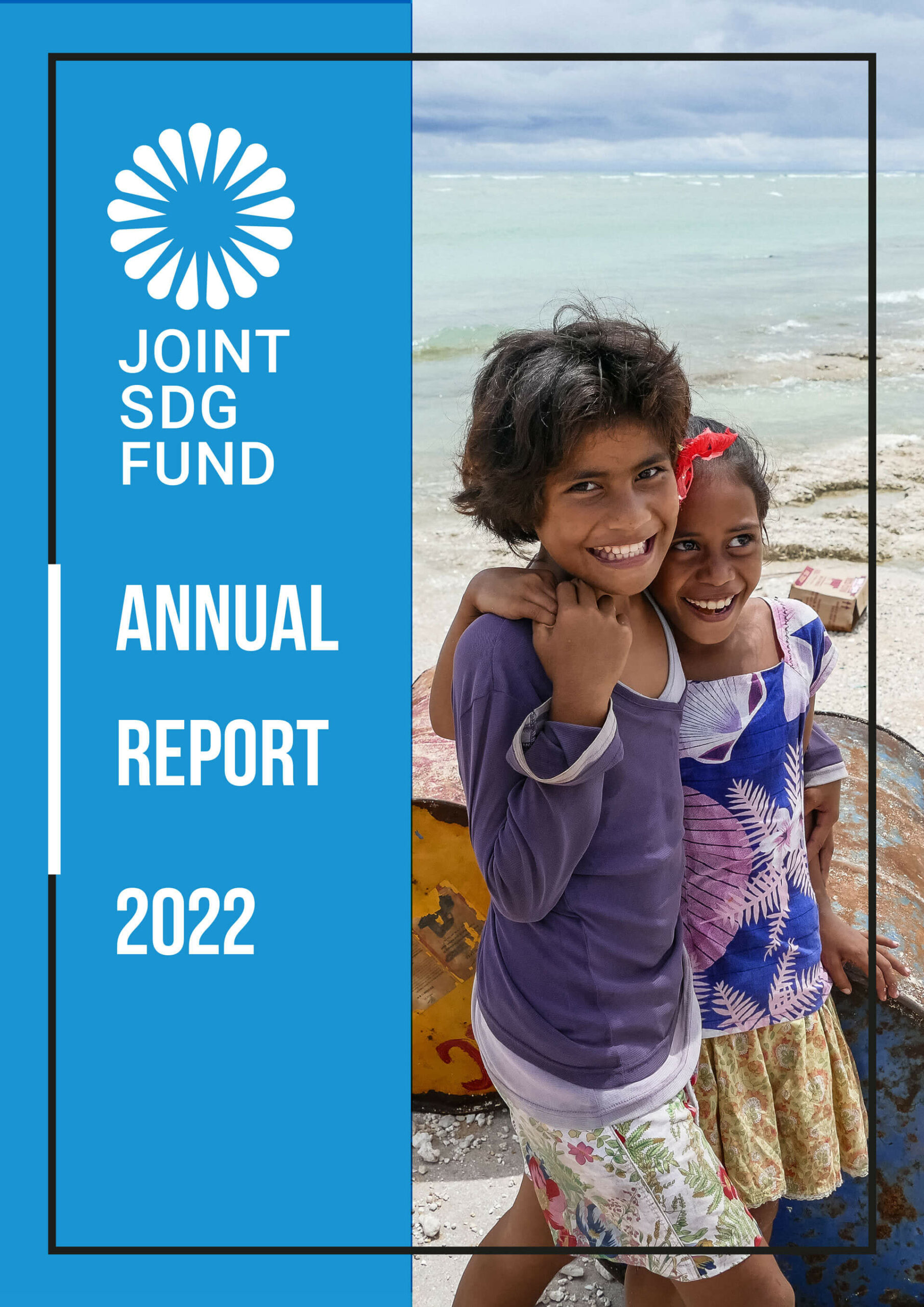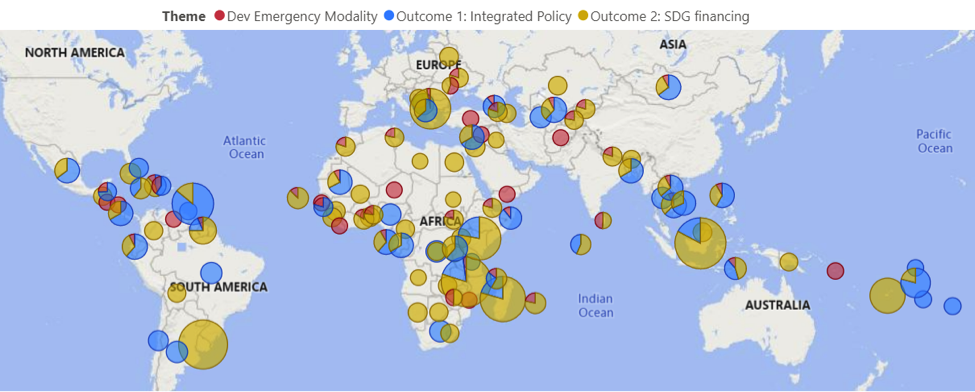Spurring catalytic UN joint actions for the SDGs
The Fund is a critical enabler of the UNDS reform as it leverages the UNDS – its expertise, tools and networks – under the leadership of the RCs. The Fund strategically finances UN Sustainable Development Cooperation Framework (UNSDCF) results, empowers the RCs, and shifts developmental financing to inter-agency pooled funds as part of the QCPR offer.
- Although comprising only 1.3% of the total UN pooled funding envelope for 2019-2020, the Fund is the largest funder of UN joint programmes in 16 countries.
- All RCs receiving support recognized the Joint SDG Fund to be essential in promoting common results based on the UNSDCFs and fostering strategic engagement with the Governments.
Fund’s Key Results by Outcome Area
Outcome 1. Integrated Policies to Accelerate SDG Achievement
The Fund accelerates the progress towards the SDGs by focusing on catalysing integrated policy innovations and transformations especially targeting the most vulnerable population groups.
- At least 149 million additional people, especially those that were initially left behind, accessed new or extended social protection services with support from the Fund.
- 35 joint programmes have designed interventions to promote gender equality and human rights in social protection and 29 programmes have incorporated shock-responsive social protection approaches to enhance local resilience against large-scale shocks.
- For instance, in Viet Nam, the joint programme helped the Government reach 32.7 million people in need by reforming the national social protection system and extending COVID-19 support.
- Launched 18 new joint programmes to enhance resilience covering 28 SIDS including social protection, SDG data, disaster risk reduction, etc.
Outcome 2. Additional Finance Leveraged to Accelerate SDG Achievement
The Fund supports the development of a new wave of SDG-aligned financing strategies called the Integrated National Financing Frameworks (INFFs) and a portfolio of strategic investments that can leverage public and private financing at scale to advance the SDGs.
- 307 financial solutions being piloted in areas of public finance management, private sector engagement, subnational level SDG financing, and debt management and SDG bonds.
- US$ 1.7 billion catalysed from the public and private sector for SDGs through sovereign SDG bonds, programme co-funding/co-financing and demonstration effects.
- 19 blended finance instruments (e.g. impact funds, SDG bonds, blue economy transactions) designed and being structured by UNCTs in partnership with public/private financing partners.
- For example, in Ghana, the Fund supports development of five district level SDG-aligned financing strategies, which will be used to scale up Ghana’s SDG financing operations to all 255 districts.
- In Indonesia, the Fund supported the issuance of a $584 million sovereign SDG bond, which is the first of its kind in southeast Asia; the proceeds will fund SDG-aligned green and social projects.
- Launched 7 new joint programmes in SIDS to catalyse additional financing for the SDGs.




















